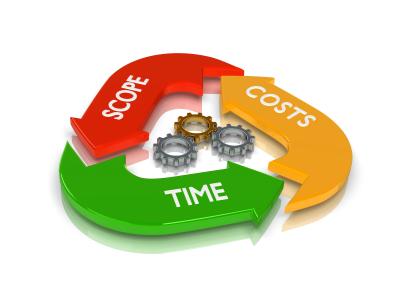Pharmaceutical news today featured another article about a manufacturing plant closure and the layoff of a thousand employees. Demand for pharmaceutical products continues to grow and will continue to grow with changes in healthcare policies and continued life expectancy increase. So where will the products come from if manufacturing facilities are being scaled back or closed?
Products need to be transferred to viable manufacturing sites utilizing state of the art pharmaceutical product and technology transfers. Excellence in pharmaceutical technical transfers is a hallmark of successful organizations today. Transfer teams are guided by trained transfer professionals with an understanding of how to maintain quality while triple constraints (Scope, Schedule, Cost) are fixed. ProPharma Group has successfully utilized the Nine Gate Transfer Process for such technical transfers. The Nine Gate Transfer Process ensures that each stage is completed according to agreed constraints and allows leadership to quickly assess progress utilizing an industry approved best practice.
In this and future blog posts, I will discuss each step of the Nine Gate Transfer Process in greater detail.
First, let’s discuss Gate 1: Assessment. Products to be transferred are divided into manufacturing process sub-categories and reviewed against safety, quality, special customer requirements and profitability. A product matrix is created to display special characteristics of products to be transferred compared to existing processes. The safety matrix section compares Active Pharmaceutical Ingredient (API) exposure limit (EL) data, containment requirements, and raw material handling requirements to available resources. The quality section includes specified raw material, in process and finished goods quality criteria that are outside current validated processes. Special customer requirements such as special filing regulations like ANVISA requirements for Brazil are included and compared against current resource constraints. Finally product profitability is assessed to ensure the transfer plan matches financial plans.
Established validated production processes with profitable products (no redevelopment) are transferred first, while products requiring long range, high capital solutions or products that may be discontinued are transferred in later phases, if not eliminated. Representatives from affected departments determine requirements and resource needs to support product transfers. Requirements and resource expectations are documented as a high level transfer plan is developed.
Products are prioritized with individual product scope (i.e. filling only), quantity per year, high level schedule (Q1, 2014) and high level transfer cost. Scope, decision boundaries and milestones are defined to ensure the team and upper management agree on expectations. An escalation matrix is included to provide the appropriate course of action when issues arise.
After the Assessment, you are ready to continue the process with Gate 2: Stakeholder Review.

